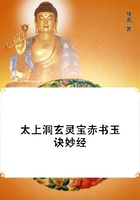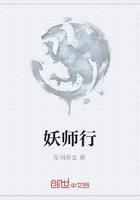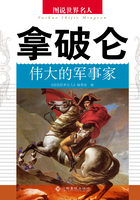And when there were in reality no triumphs to celebrate, the poets found a compensation for themselves and their patrons.Petrarch and Boccaccio had described the representation of every sort of fame as attendants each of an allegorical figure; the celebrities of past ages were now made attendants of the prince.The poetess Cleofe Gabrielli of Gubbio paid this honour to Borso of Ferrara.She gave him seven queens--the seven liberal arts--as his handmaids, with whom he mounted a chariot; further, a crowd of heroes, distinguished by names written on their foreheads; then followed all the famous poets; and after them the gods driving in their chariots.There is, in fact, at this time simply no end to the mythological and allegorical charioteering, and the most important work of art of Borso's time--the frescoes in the Palazzo Schifanoia--shows us a whole frieze filled with these motives.Raphael, when he had to paint the Camera della Segnatura, found this mode of artistic thought completely vulgarized and worn out.The new and final consecration which he gave to it will remain a wonder to all ages.
The triumphal processions, strictly speaking, of victorious generals, formed the exception.But all the festive processions, whether they celebrated any special event or were mainly held for their own sakes, assumed more or less the character and nearly always the name of a 'Trionfo.' It is a wonder that funerals were not also treated in the same way.
It was the practice, both at the Carnival and on other occasions, to represent the triumphs of ancient Roman commanders, such as that of Paulus Aemilius under Lorenzo the Magnificent at Florence, and that of Camillus on the visit of Leo X.Both were conducted by the painter Francesco Granacci.In Rome, the first complete exhibition of this kind was the triumph of Augustus after the victory over Cleopatra, under Paul II, where, besides the comic and mythological masks, which, as a matter of fact, were not wanting in the ancient triumphs, all the other requisites were to be found--kings in chains, tablets with decrees of the senate and people, a senate clothed in the ancient costume, praetors, aediles, and quaestors, four chariots filled with singing masks, and, doubtless, cars laden with trophies.Other processions rather aimed at setting forth, in a general way, the universal empire of ancient Rome; and in answer to the very real danger which threatened Europe from the side of the Turks, a cavalcade of camels bearing masks representing Ottoman prisoners, appeared before the people.Later, at the Carnival of the year 1500, Cesare Borgia, with a bold allusion to himself, celebrated the triumph of Julius Caesar, with a procession of eleven magnificent chariots, doubtless to the scandal of the pilgrims who had come fm the Jubilee.Two 'Trionfi,' famous for their taste and beauty, were given by rival companies in Florence, on the election of Leo X to the Papacy.One of them represented the three Ages of Man, the other the Ages of the World, ingeniously set forth in five scenes of Roman history, and in two allegories of the golden age of Saturn and of its final return.The imagination displayed in the adornment of the chariots, when the great Florentine artists undertook the work, made the scene so impressive that such representations became in time a permanent element in the popular life.Hitherto the subject cities had been satisfied merely to present their symbolical gifts--costly stuffs and wax-candles-- on the day when they annually did homage.The guild of merchants now built ten chariots, to which others were afterwards to be added, not so much to carry as to symbolize the tribute, and Andrea del Sarto, who painted some of them, no doubt did his work to perfection.These cars, whether used to hold tribute or trophies, now formed part of all such celebrations, even when there was not much money to be laid out.The Sienese announced, in 1477, the alliance between Ferrante and Sixtus IV, with which they themselves were associated, by driving a chariot round the city, with 'one clad as the goddess of peace standing on a hauberk and other arms.'














